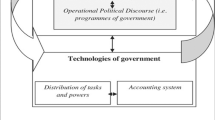Abstract
We present the study of the forming and development of risk images in a high-risk industry when introducing advanced new operational technologies. The case studied is the planning and implementation of integrated operations (IO) in offshore oil and gas production. We define a risk image as a combination of hazard identification and risk perception. The informants were representatives from different groups involved in the evaluation or development of IO on the Norwegian continental shelf. Data were collected through interviews and observations in workshops and of text representations. The analysis of the data revealed three groups of risk images: technological optimism, traditional risk images and reconfigured risk images. The individual risk images seem to be primarily connected to participation in distributed communities of knowing, operating on different arenas. These constructed risk images at the same time may act both to allocate attention to some hazards and to divert attention from others. We conclude that we need further research on risk images among those that take part in risk appraisal.
Similar content being viewed by others
References
Berger, P.L. and Luckmann, T. (1967) The Social Construction of Reality: A Treatise in the Sociology of Knowledge. Harmondsworth, UK: Penguin.
Boland, R.J. and Tenkasi, R.V. (1995) Perspective making and perspective taking in communities of knowing. Organization Science 6 (4): 350–372.
Clegg, S., Kornberger, M. and Pitsis, T. (2008) Managing & Organizations: An Introduction to Theory & Practice. London: Sage.
Feldman, M.S. (1989) Order without Design: Information Production and Policy Making. Stanford, CA: Stanford University Press.
Glaser, B.G. and Strauss, A.L. (1967) The Discovery of Grounded Theory Strategies for Qualitative Research. Chicago, IL: Aldine.
Jaafar, M., Aziz, A.R.A., Ramayah, T. and Saad, B. (2007) Integrating information technology in the construction industry: Technology readiness assessment of Malaysian contractors. International Journal of Project Management 25 (2): 115–120.
Kahneman, D. and Slovic, P. et al (1982) Judgment under Uncertainty Heuristics and Biases. Cambridge: Cambridge University Press.
March, J.G. and Olsen, J.P. (1976) Ambiguity and Choice in Organizations. Bergen, Norway: Universitetsforlaget.
OLF (2005) Integrated work processes. Future work processes on the Norwegian continental shelf, http://www.olf.no/rapporter/category229.html, accessed 1 January 2010.
Pidgeon, N. (1998) Safety culture: Key theoretical issues. Work and Stress 12 (3): 202–216.
Sackmann, S.A. (1991) Cultural Knowledge in Organizations: Exploring the Collective Mind. Newbury Park, CA: Sage.
Sjöberg, L. (1999) Risk perception by the public and by experts: A dilemma in risk management. Human Ecology Review 6 (2): 1–9.
Tichy, G. (2004) The over-optimism among experts in assessment and foresight. Technological Forecasting & Social Change 71 (4): 341–363.
Turner, B.A. (1979) Man-Made Disasters. Bristol, PA: Taylor & Francis.
Turner, B. and Pidgeon, N.F. (1997) Man-Made Disasters. London: Butterworth-Heinemann.
US Congress (2010) Letter to BP CEO Tony Hayward, http://www.offshoreinjuries.com/media/pdfs/06-14-10_Ltr_from_Congress_to_Hayward.pdf, accessed November 2010.
Weick, K.E. (1979) The Social Psychology of Organizing. Reading, MA: Addison-Wesley.
Weick, K.E. (1995) Sensemaking in Organizations. Thousand Oaks, CA: Sage.
Wenger, E. (2004) Communities of practice and social learning systems. In: K. Starkey, S. Tempest and A.M. Kinley (eds.) How Organisations Learn: Managing the Search for Knowledge. London: Thomson Learning, pp. 238–257.
Acknowledgements
This work was supported by the Center for Integrated Operations in the Petroleum Industry (http://www.ntnu.edu/web/iocenter/home).
Author information
Authors and Affiliations
Rights and permissions
About this article
Cite this article
Tveiten, C., Schiefloe, P. Risk images in a changing high-risk industry. Risk Manag 16, 44–61 (2014). https://doi.org/10.1057/rm.2014.3
Published:
Issue Date:
DOI: https://doi.org/10.1057/rm.2014.3




